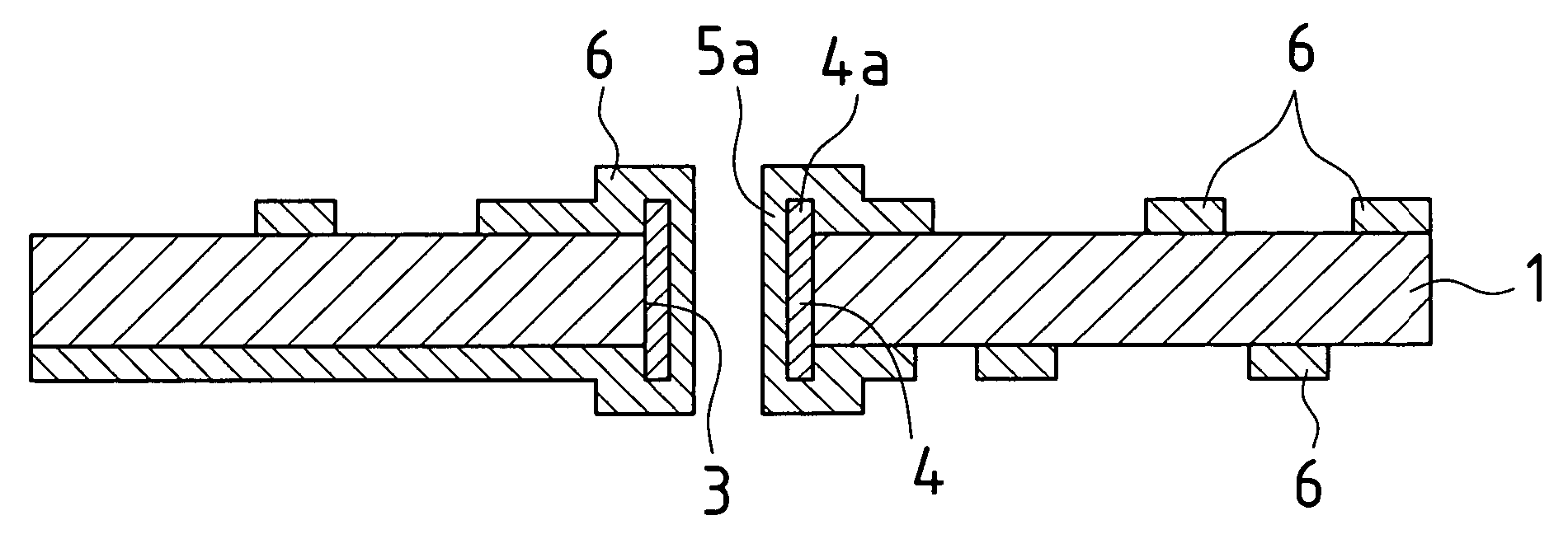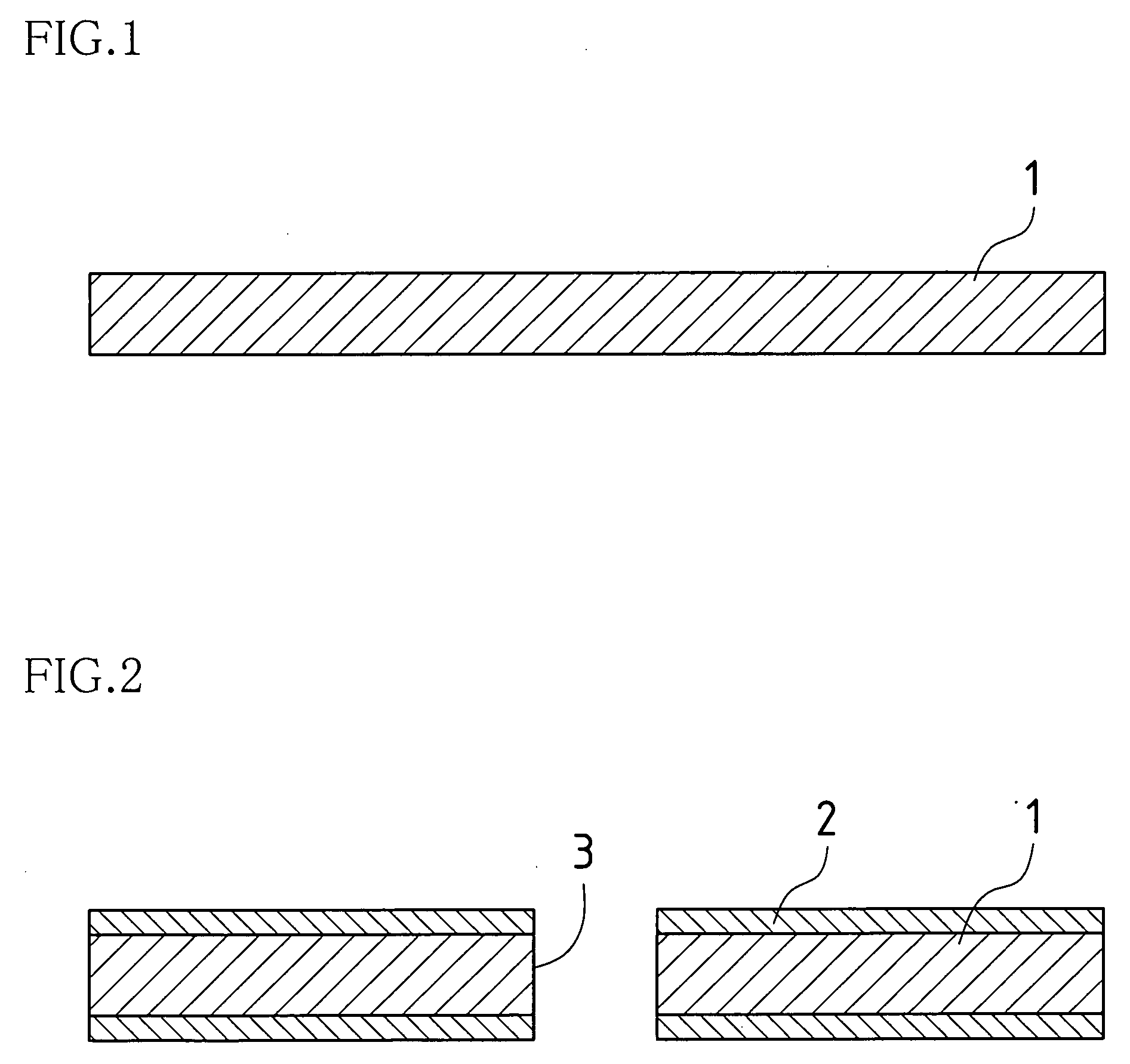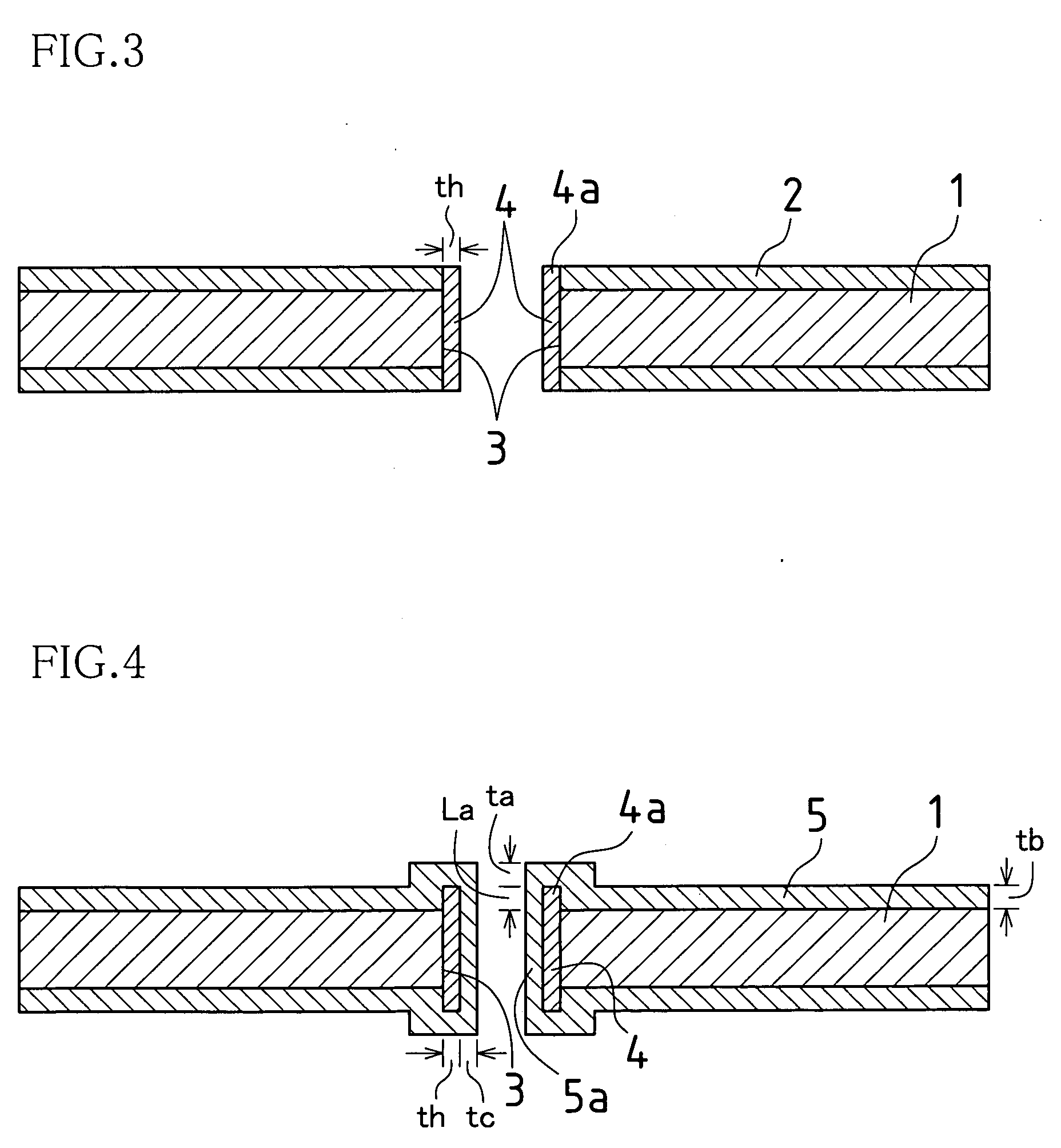Method for producing multilayer printed wiring board, multilayer printed wiring board, and electronic device
a multi-layer printed wiring board and printed technology, applied in the direction of superimposed coating process, resistive material coating, liquid/solution decomposition chemical coating, etc., can solve the problem of difficult to achieve fine conductor pattern, difficult to position, entail the same problems, etc., to achieve high reliability and high reliability through-hole conductor
- Summary
- Abstract
- Description
- Claims
- Application Information
AI Technical Summary
Benefits of technology
Problems solved by technology
Method used
Image
Examples
embodiment 1
[0061] FIGS. 1 to 5 are cross-sectional views in process for explaining a multilayer printed wiring board and a method for producing the same according to Embodiment 1 of the present invention.
[0062]FIG. 1 shows a wiring board substrate 1, which is a core material of a multilayer printed wiring board according to the present invention. The wiring board substrate 1 is constituted by an insulating resin plate that is generally available in the market. Although a material such as epoxy resin, polyester resin, fluororesin and polyimide resin is generally used for the resin plate, it is needless to say that other materials may be used. In addition, to secure the physical strength, a fiber-reinforced resin plate, which is reinforced with fibers such as paper, fiber glass and aramid fiber, is preferable as the resin plate.
[0063] Furthermore, in view of simplification of production process, a resin plate processed with a plating catalyst, which has a plating catalyst mixed into the resin ...
embodiment 2
[0083]FIG. 6 is a cross-sectional view for explaining an electronic device according to Embodiment 2 of the present invention. The same numeric references are used for the same components as Embodiment 1 and detailed explanation is omitted when deemed appropriate.
[0084]FIG. 6 indicates a conceptual illustration of an electronic device having electronic components 7 mounted (soldered) as appropriate thereon on locations that correspond to the conductor pattern 6 (multilayer printed wiring board formed according to Embodiment 1 as shown in FIG. 5) which is formed to correspond to specific circuit wiring for construction of the electronic device. Examples of the electronic components 7 include chip resistors and chip capacitors. It is, of course, also possible to mount a chip integrated circuit.
[0085] Since an electronic device is produced by mounting the electronic components 7 on a more reliable multilayer printed wiring board having the through-hole conductor 4 (and the panel-plat...
embodiment 3
[0086]FIG. 7 is a cross-sectional view for explaining a multilayer printed wiring board and a method for producing the same according to Embodiment 3 of the present invention. The same numeric references are used for the same components as Embodiments 1 and 2 and detailed explanation is omitted when deemed appropriate.
[0087] A multilayer printed wiring board in this embodiment is produced by changing the plating conditions used to form the panel plating layer 5 (see FIG. 4) in a panel plating layer forming process according to Embodiment 1 so that the film thickness tb of the panel plating layer 5 becomes in the same level as the sum of the protrusion length La of the protrusion 4a of the through-hole conductor 4 and the film thickness ta of the panel plating layer 5. The plating conditions include composition of a panel plating bath, plating method, metal selection and plating film thickness.
[0088] Film thickness tb of the panel plating layer 5 may be set to the film thickness ne...
PUM
| Property | Measurement | Unit |
|---|---|---|
| Thickness | aaaaa | aaaaa |
| Electrical conductor | aaaaa | aaaaa |
| Area | aaaaa | aaaaa |
Abstract
Description
Claims
Application Information
 Login to View More
Login to View More - R&D
- Intellectual Property
- Life Sciences
- Materials
- Tech Scout
- Unparalleled Data Quality
- Higher Quality Content
- 60% Fewer Hallucinations
Browse by: Latest US Patents, China's latest patents, Technical Efficacy Thesaurus, Application Domain, Technology Topic, Popular Technical Reports.
© 2025 PatSnap. All rights reserved.Legal|Privacy policy|Modern Slavery Act Transparency Statement|Sitemap|About US| Contact US: help@patsnap.com



